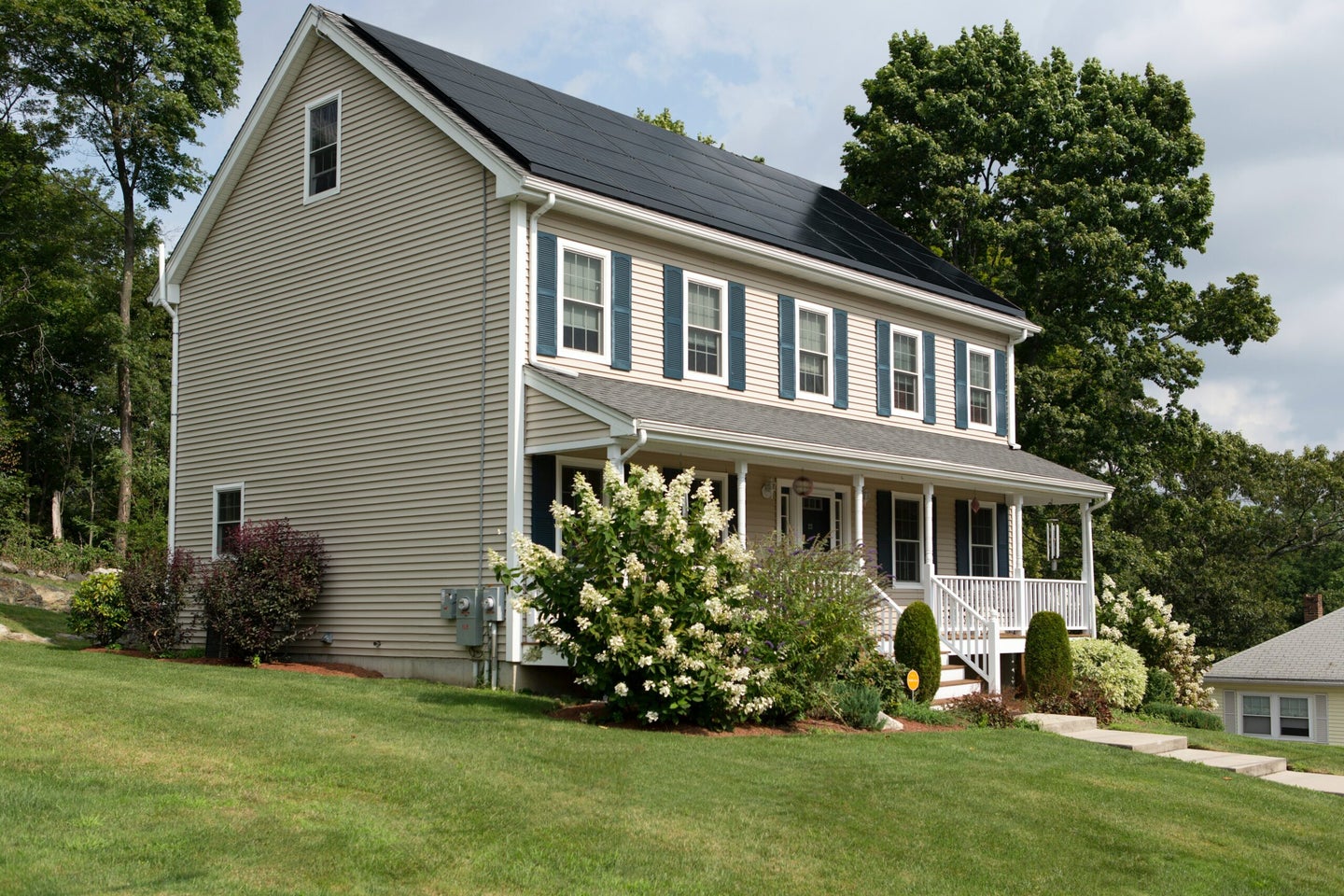Power companies are lobbying to make rooftop solar more expensive
Whether for profit or to avoid widespread rate hikes, the outcome might make generating your own electricity less appealing.

If you make your own electricity by capturing sunlight hitting your property, how much do you still owe the entity that manages your grid?
That question is fueling conflict across several states as utility companies move to cut back on policies that make rooftop solar cost-effective and appealing for many homeowners. In a recent report, the nonprofit Environment America Research & Policy Center highlighted examples of utility companies and interest groups lobbying to decrease the rate at which rooftop solar owners can sell their power back to the grid.
This battle would have the largest impact in California, where more than a million homes and businesses have rooftop panels. Investor-owned utilities Pacific Gas & Electric, Southern California Edison, and San Diego Gas & Electric are pushing the state regulators to implement higher monthly charges for solar panel owners, while cutting back on payments for generating power to the grid. Solar advocates call it a profit grab that will stymie the transition to renewable energy, but utilities say that the fees are necessary to prevent energy rate increases for those without solar panels.
At the heart of the debate is a policy called net metering, which is in place across 40 states, Washington DC, and some US territories. When someone with solar panels on their roof is producing more electricity than they can use—say, on a clear summer day—that excess is essentially sold to their neighbors, generating a credit to their utility account. In some states, that credit can be banked for use later in the year, covering utility costs when solar panels aren’t generating as much power, such as in the winter.
In California, generous net metering policies are thought to be a large factor behind the widespread development of rooftop solar. “It’s the foundation of California solar,” says Dave Rosenfeld, the executive director of the nonprofit Solar Rights Alliance. If the proposals being floated by utility companies succeed, Rosenfeld estimates they would double the cost of rooftop solar for homeowners. The California Public Utilities Commission, the state entity that oversees the utilities, is currently preparing to update its net metering rules, and utility companies have sent in their proposals for consideration.
Utility companies argue that solar owners aren’t paying their fair share for using the grid—when net metering credits slash customers’ monthly bills, less money goes into maintaining infrastructure like power lines. This, utility companies say, forces them to raise electricity prices on those without solar panels.
[Related: Solar power got cheap. So why aren’t we using it more?]
But Rosenfeld says that utilities are more motivated by profit than by fairness. Investor-owned monopoly utilities, such as those in California, often make a guaranteed fixed rate of return from the state on their capital investments. That means for every dollar they spend on long distance power lines or power plants, they make a consistent profit. Home solar both reduces the need for capital investments and also doesn’t generate a profit for utilities.
The fight against rooftop solar, whatever the motivations, could hamper efforts to cut carbon emissions from energy production.
Though larger-scale installations of renewable energy are going to be necessary to meet the bulk of demand in a clean energy-powered economy, rooftop solar can speed up that transition and provide added benefits. “Rooftop solar provides so many benefits, including clean electricity,” says Bronte Payne, the director of Environment America’s solar campaigns. “It doesn’t take up extra open space because you can put it on people’s rooftops, it will build a more resilient grid.” She adds that rooftop solar also reduces the need for new transmission lines and other electricity infrastructure, which could lower electricity costs for utility customers.
Still, that doesn’t mean that homeowners avoiding utility costs by installing solar can’t have a negative impact for their neighbors. “If you are reimbursed 100 percent for all the electricity you generate, regardless of when in the year you generate it … then you could go to having a zero electricity bill, even though you’re very much using the grid. You’re very much putting power on and taking power off, and you are reliant on the utilities, and [utilities are] on the hook to cover that,” says Ashley Langer, an energy economist at the University of Arizona. “So what that means is that anybody who doesn’t have solar is facing higher electricity bills.” Connection to the grid means that when the sun isn’t shining, utilities provide power to fill in those gaps.
The degree to which rooftop solar affects electricity rates depends on what proportion of rooftops in a given state are outfitted with panels. In a 2017 analysis, Lawrence Berkeley National Laboratory researcher Galen Barbose found that net metering in most states has a negligible impact on electricity prices, and that other factors—such as increasing capital expenses—were more likely to raise rates. Even increasing energy efficiency can pose a greater threat to ratepayers; as appliances and homes become more efficient, they use less power, and therefore generate less revenue for utilities (alas, what’s good for the climate doesn’t square with the business models of many utility companies). But in states like California and Hawaii, where a relatively large share of the population has solar panels on their roof, the loss of utility profits might be enough to cause rates to rise.
Langer thinks there may be a solution to the conflict: setting fees that cover the cost of using the grid, while still maintaining some degree of net metering as an incentive to install rooftop solar. “I think getting the incentives right, for both the utility and the household is important,” she says. “Households are producing clean electricity, not electricity that spews out pollution, and so they should get a benefit.”
